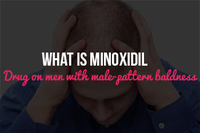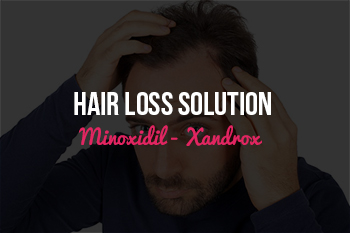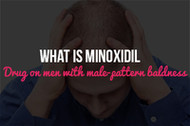What Is Minoxidil
20th Jun 2014
 Minoxidil is a medication that doctors have used to treat high blood pressure. These doctors noticed, however, that when their patients came in for follow-up appointments, they had more hair. Researchers began research, testing the effects of this drug on men with male-pattern baldness.
Minoxidil is a medication that doctors have used to treat high blood pressure. These doctors noticed, however, that when their patients came in for follow-up appointments, they had more hair. Researchers began research, testing the effects of this drug on men with male-pattern baldness.
Used for Hair Loss
Minoxidil is added to a liquid solution in concentrations of 2 percent and 5 percent. When added to a foam, the only available concentration is 5 percent.
These preparations are used topically. That is, they are applied directly to the skin as hair-loss patients try to reverse hair loss they have suffered. Men suffering from baldness aren't the only ones to use this medication. Women who have lost hair over wide areas of their scalps or immediately above their foreheads may also succeed in growing more hair.
Available Over-the-Counter
Men and women wanting to regrow hair in areas where they have experienced hair thinning or baldness can find this medication in the aisles of their pharmacies. It is available over-the-counter. If the brand-name medication is unavailable or out of the reach of customers, a generic version is available as well.
Found in Rogaine
This is the only hair-loss preparation in which minoxidil can be found. To date, no other hair-loss solution or form is available on the market.
 When it is stored, it should be kept at room temperature or between 68 and 77 degrees F. Package instructions say that the medication should be applied as either one-half capful of foam or 1 ml of liquid solution to the scalp in the morning, then once again at night. For the most effective use, it has to be spread evenly over the areas of hair loss.
When it is stored, it should be kept at room temperature or between 68 and 77 degrees F. Package instructions say that the medication should be applied as either one-half capful of foam or 1 ml of liquid solution to the scalp in the morning, then once again at night. For the most effective use, it has to be spread evenly over the areas of hair loss.
Once the person has finished massaging the solution or foam into his scalp, he should wash his hands with warm water. This medication works best on younger people, those who have had baldness for a longer time and who have larger bald areas. It will take about four months before results become obvious.
Side Effects, Interactions and Mothers
Pregnant or nursing mothers should avoid using this preparation because doctors don't know how it can affect babies. It should not be used with other topical medications because they could increase the side effects and absorption rate.
People using this preparation may notice itching, skin irritation, contact dermatitis and flaky or dry scalp. Those who have scalp damage may experience an increased rate of absorption of this medication.

